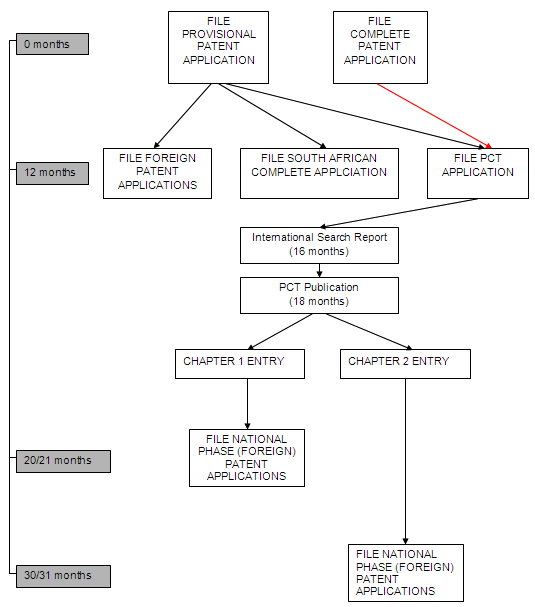FAQs
ESTIMATED PATENT COSTS
| Self-file your provisional patent through Iptica using our provisional patent drafting and filing guide | $99 |
| Self-file your provisional patent through GlobalIPCo | $49 |
| File South African national phase patents through GlobalIPCo | $399 |
Filing national phase applications:
| Country | Filing fee* |
|---|---|
| ARIPO | R24,000 (filing fee) plus R2,000 per country |
| Australia | R25,000 |
| Brazil | R42,000 |
| Canada | R24,000 |
| China | R35,000 |
| Europe | approx. R75,000 |
| India | R22,000 |
| Japan | R60,000 |
| Nigeria | R26,000 |
| OAPI | R58,000 |
| US | R39,000 |
* Foreign filing costs are only the costs associated with filing the foreign patent applications. In most countries (excl. South Africa), additional costs will be incurred in prosecuting the patent applications to grant. These costs typically range between 1 and 3 times the filing cost and are payable over a period of 2 to 5 year from filing.
NOTE: The above are merely ballpark figures.
LITIGATION
Costs and Time
Both the cost and time for an action is dependent on the process followed. Potential steps in the process include:
- Approaching the Commissioner of Patents Court for an order that a patent is infringed
- The action may lead to a counterclaim for revocation of the patent
- The counterclaim may require the main action for infringement to be stayed and an application to amend the patent to be heard by the Commissioner of Patents
- The application to amend may be appealed to the Full Bench / Supreme Court of Appeals
- The infringement action may then be re-instituted in the Commissioner of Patents Court
- The Commissioner’s decision may be appealed to the Full Bench or the Supreme Court of Appeal
Accordingly, an action may cost anywhere between R300 000 and R3 million and can take anywhere between 8 and 24 months.
Recoverable Costs
A successful party to an action is typically granted an order for costs on the Party-Party scale. This amount is dictated by the official tariff, which generally amounts to one-third of the actual costs incurred.
Damages Claimable / Marking of Product
In South Africa, damages may only be claimed from the date on which the infringer knew or ought to have known about the existence of a patent. This is why patented products should be marked with the patent number.
The quantum of damages is limited to damages actually suffered by the patentee. This does not necessarily correspond to the profits that the infringer derived from the sale of the infringing products. Often, the concept of a “reasonable royalty” is used to quantify damages.
Enforcing a Patent or a Patent Application
Only a granted patent may be enforced.
Action may typically only be instituted 9 months after the grant of a patent. Although, damages may be claimed as from the date of grant.
Claim Drafting
One should identify the primary potential infringers and draft the claims so that each infringer satisfies each step or integer in a claim.
COMMERCIALISING INTELLECTUAL PROPERTY
Royalty Payable / Determining the Value of a Patent
Depending on the invention, royalty may be calculated based on:
- a percentage of the profit derived from a patented product or process;
- a percentage of the saving realised in an existing product or process as a result of the invention; or
- a percentage of the premium chargeable for an existing product or process as a result of the addition of the invention.
The “percentage” is typically between 20 and 33 percent.
In determining the value of a patent, one typically: calculates the royalty payable over the expected useful life of the patent and applied a discount rate thereto to determine the net present value (NPV).
Note: This merely provides a guide to the amount payable. Other factors, including the exclusivity of the licence, up-front payments, risk assumed, useful life, cancellation provisions, technological area, the right to assign or cede one’s rights, etc would impact the value.
PATENTING STRATEGY
Filing Own Provisional
An applicant may self-draft and file a provisional application, although this is not advised. A complete application must however be signed by a patent attorney.
A provisional application must fully describe the invention. When claiming priority, a complete patent application is constrained by the disclosures made in the provisional application.
File Provisional or Complete Patent?
Factors in favour of filing a provisional application:
Where an invention is in a state of flux, i.e. where manufacture, commercialisation or further research during the following year may result in modifications or additions to the invention, it is advisable to file a provisional patent application. During the one year period, further provisional applications may be filed to cover the new features. And, all these features may be combined in a complete application, filed at the end of the year. If a complete patent application is filed in the first instance, this can only be added to by filing supplementary disclosures or patents of addition.
A provisional provisional application is quicker and cheaper to file. You can also get a Patent Pending Number for only $99 through Iptica.
File a PCT patent application?
Where a patent application is to be filed in various foreign countries, it is advisable to file a PCT application to determine the patentability of the invention prior to incurring foreign filing costs.
A PCT application also delays the costs of filing foreign patent applications by up to 19 months, providing the applicant with more time to finance the filing of the foreign patent applications.
The PCT Search Report and the Preliminary Examination Report may assist in persuading licensees / funders to finance foreign patent filings.
File an EU Application?
One should consider filing an EU application if applications are to be filed in three or more EU member countries.
Adding to the Invention
An invention may be “added to” by:
- Filing a new patent application (provided that the addition is new and inventive)
- Filing a patent of addition (provided that the addition is new)
- While the complete application is pending: filing a supplementary disclosure BEFORE grant of the South African complete patent application
- While the provisional application is pending: filing a new provisional and claiming priority from both provisional applications when filing the corresponding complete patent application
FILING A DESIGN OR A PATENT APPLICATION?
Advantages and Disadvantages of Designs
Advantages:
- Designs are cheaper and quicker to file
- Design applications proceed to grant faster than a patent application
- Designs are cheaper and simpler to enforce in the courts than patents
Disadvantages:
- Designs only protect the way an object looks and not the inventive principle
- The scope of protection afforded by a design registration is typically far narrower than that of a patent
- The scope of protection afforded by a design registration is dependent on the prior art. The determination of the scope for designs is therefore much more subjective than for patents
Instances where designs should be filed:
- Where it is difficult to alter the aesthetics of an object
- Where a mould has to be made to manufacture the object and the cost of making the mould is prohibitive
- Where the object may be used to cast a mould required to reproduce the object
- Where “instant” protection is required against “copycats”
Instances where designs should not be filed:
- Where the aesthetics of an object can easily be changed
- Where the registration is for a functional design of a spare part
MANUFACTURING IN SOUTH AFRICA AN INVENTION SEEN OVERSEAS
Patenting the Invention in South Africa
Any disclosure of the invention destroys novelty in South Africa. Therefore if one sees a new product overseas, that person cannot patent it in South Africa. Furthermore, if that person discloses the new product to a South African under a confidentiality agreement, the obligations of confidentiality are not enforceable.
Liability for Infringement in South Africa
Only a corresponding South African patent can be infringed in South Africa. One should therefore conduct a suitable search to determine whether the invention is protected in South Africa.
Extension of Patent Rights to South Africa
If no PCT application was filed, a South African application must be filed within 12 months of the filing of the priority application.
If a PCT application was filed, a South African national phase application can be filed up to 34 months from the priority date of the invention.
COUNTRIES THAT ARE SIGNATORIES TO THE PARIS CONVENTION AND THE PATENT CO-OPERATION TREATY
Priority can only be claimed in countries that are signatories to the Paris Convention. Accordingly, any disclosure in South Africa after the date of filing a South African provisional patent application may invalidate future foreign patent applications in non-signatory countries.
Also, when filing a PCT patent application, it is important to note the non-member countries. Applications in non-member countries should be filed at the time of filing the PCT patent application.
Overview of Patenting Time Line

